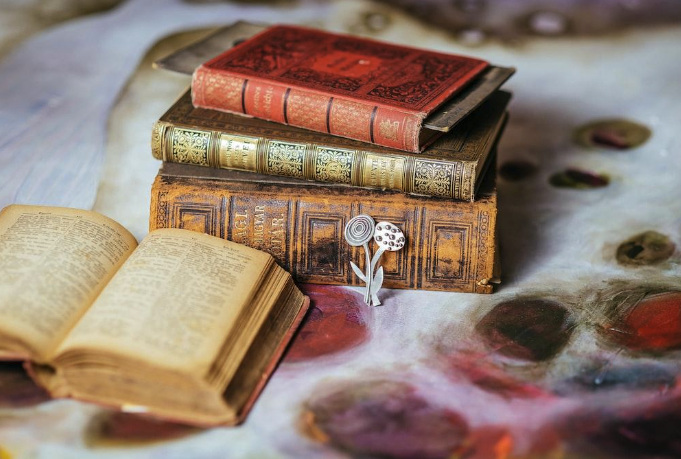Did you know that there are different beginnings with which you can start telling your story?
Although writing is not a process that is entirely predetermined by pre-existing structures, often and unknowingly, when writing, we stick to what we know unconsciously as readers.
Knowing what has already been written and how it has been written is extremely useful when it comes to directing our style as writers. We must be aware of why we write, how we write, and what options and tools we have at our disposal.
The beginning or approach, along with the development and the outcome, is one of the fundamental parts of the structure of any literary work. Therefore, it is essential to know how you can start your novel.
I hope this article will be helpful to all aspiring writers and all those who work in the writing field – for example, in an essay writing service or as a copywriter – but dream of writing their first novel.
Table of Contents
The importance of beginnings
As you know, the moment a reader opens a book and starts reading is crucial.
In this brief fragment of time, which usually lasts only a few minutes, the reader decides whether or not to continue with work, and most of the time, this will determine whether the person will be interested in buying the book.
The beginning of a novel has to suddenly transport the reader to your story, awakening curiosity and their desire to continue reading. If you don’t want the reader to give up, you have to be able to grab their attention.
Put the reader in context, distribute a specific dose of mystery, present an intriguing situation and make it credible. Build the beginning of your work as if it were an invitation that you can’t say no to. How to achieve this? Learn what types of beginnings exist and think about which one might best apply to your story and how you tell it.
Types of beginnings: the ab ovo beginning
As its Latin locution suggests, this is a beginning that starts “from the origin” of things. Horace’s expression refers to Leda’s egg from which Helen was born.
Daniel Defoe begins to tell the story of Robinson Crusoe with this kind of beginning:
“I was born in 1632, in the city of York, of a good family, though not of the region, for my father was a foreigner from Bremen who first settled in Hull. There he succeeded in making a considerable fortune as a merchant and later abandoned his business and went to live in York, where he married my mother. She belonged to the Robinson family, one of the good families of the county from which I got my name, Robinson Kreutznaer. But, by the usual alteration of words made in England, we are now called, and we also call ourselves and write our name Crusoe; so I have always been called by my fellows.
When we decide to write our work with an ab ovo beginning, we have to keep in mind that we are going to tell our story from the chronological beginning of the story, following a temporal order that, through summaries, events, and descriptions, allows us to tell the story of our character. It is often used in novels with a biographical type of cut.
Types of beginnings: the beginning in media’s res
As the name says, from the Latin “in the middle of things”, these beginnings occur in the middle of the story.
In this case, we do not start writing by telling the story from the beginning but the middle. This does not mean we will not expose what has happened before, but we will use other narrative tools to bring us back to the past. All relevant events and conflicts that have led the character to the current situation must be recounted as soon as possible to put the reader in context.
This is one of the most popular beginnings, as this way, the reader will be in the middle of the story’s action, which will probably leave him wanting to know more about the situation he has just read about, hooking him.
An example of an in-medias res beginning can be found in the novel of The Three Musketeers, the beloved classic written by Alexandre Dumas:
“On the first Monday of April 1625, a young Gascon named D’Artagnan arrived in the village of Meung. He carried a long sword slung at his side but was especially conspicuous for being mounted on a horse of gaudy yellow color. His father gave him the horse, fifteen escudos and a letter to Monsieur de Tréville, the captain of the king’s musketeers before the young man left for Paris to make his fortune.
Types of beginnings: the beginning in extremis
When we employ this third type of beginning, we begin to tell our story from “the last moment.”
The reader will be confronted with the end of the story, or an event very close to the end, from the very first pages of the work. He or she will therefore want to follow along to find out how the protagonist got to that point.
“It will suffice to say that I am Juan Pablo Castel, the painter who killed Maria Iribarne; I suppose that the process is in everyone’s memory and that no further explanation is needed about myself.”
As you will be experiencing yourself, the words that give the beginning to Ernesto Sábato’s novel The Tunnel invite us to read on.
The beginning in extremis can be irresistible, as we will want to get to know his characters better and discover the events of the development. In this case, it will be essential that you know how to dose the information correctly so that all the threads of the story connect logically to its beginning.
Which beginning is better for your work?
If you don’t know which of these beginnings might best suit your novel, my advice is to experiment. There’s no better way to discover what works best for you than practice.
Try giving different beginnings to your story, and when you have the first draft read them as if you were your ideal reader.
Are you hooked on the first words? If so, you’re doing well. If not, write it again, and don’t be afraid to make changes along the way. As I’ve said many times: being a writer is a constant work of trial and error. You will see that if it doesn’t come out the first time, it will be the second, the third, or the fourth… Don’t give up! Work hard to give your novel the best start! We also invite you to check a list of helpful writing tools for students to help you write essays perfectly!


